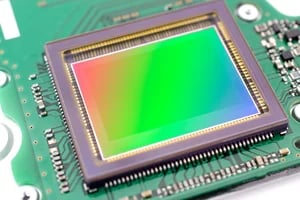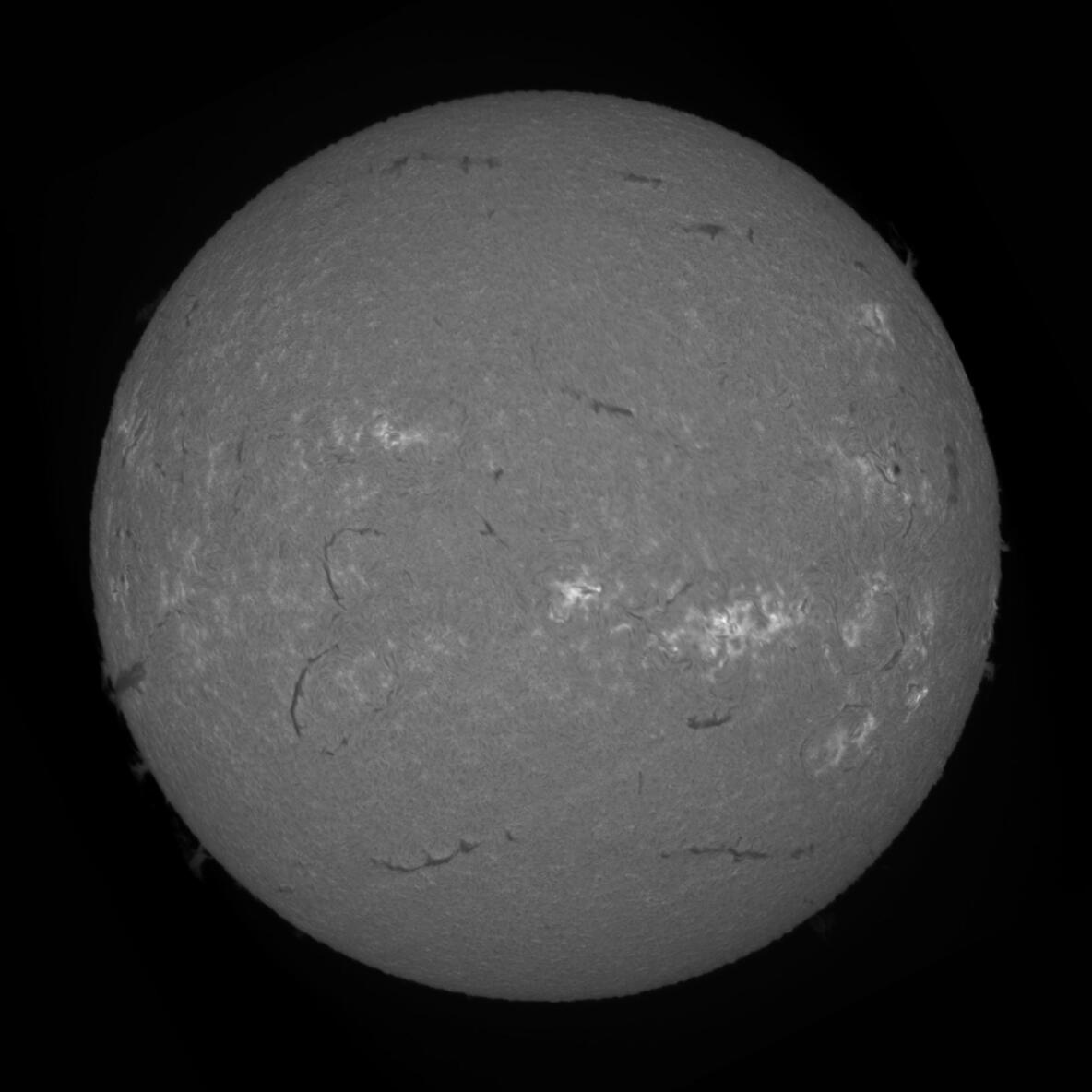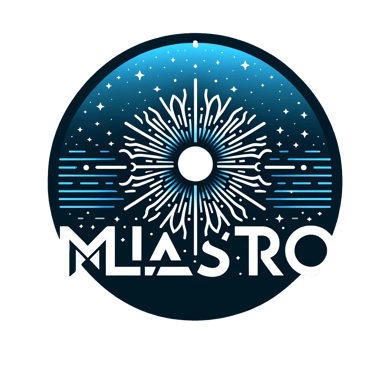SHG 700 : Batch 7 ; ETA Shipping ~ Mid-late December 2025
SAL-33 : Batch 2 ; ETA Shipping ~ Late Feb -Early Mar 2026
Camera guide for SHG
What you'll need to know about the camera that you should use on your SHG.
12/3/20245 min read
The MLAstro SHG 700 offers unparalleled versatility for observing the Sun in various wavelengths, such as H-alpha, H-beta, CaK, and more. To harness its full potential, selecting the right camera is crucial. Here's an in-depth guide to help you choose the best camera for your SHG 700 setup.


Sensor Type: Mono or Color
For Image Capturing: The camera must be monochrome. The mosaicking software won't accept color scanning video so you'll have to use a mono camera for this.
For Outreach and Education: A color camera can be used to show the absorption lines in full color. This is especially valuable for educational and outreach purposes, as it provides a direct, visually striking representation of the Sun’s spectrum. However, color cameras cannot be used for capturing images with SHG.
Sensor Size
The SHG 700's optics are designed for a 7mm long slit, so it’s best to use a camera with a sensor that has at least 7mm on its long edge to capture the full field effectively. Using a smaller sensor will result in part of the slit being cropped. While you can still capture images with a smaller sensor, it won't utilize the entire slit, though it can still be advantageous for capturing full-disk solar images with shorter focal length telescopes.
Cameras using sensors like the IMX178 and IMX678 are particularly advantageous for this setup. Their sensor long edges measure 7.4mm and 7.7mm, respectively, making them a perfect match for the 7mm slit while providing a small margin for alignment errors.
Pixel Size
The effect of pixel size on SHG image quality cannot be overstated. If the pixel size is too big, you'll lose both contrast (due to reduced spectral resolution) and spatial resolution. Imaged above is an image taken from exactly same SHG/telescope. The only different was the camera. 1 was taken with the IMX178 sensor (2.4um) and other was taken with an IMX174 sensor (5.86um). Image credit : SungHui Tsai
Smaller pixel sizes (2–2.4 µm) are ideal for the SHG 700's optics, as they provide the correct sampling rate, resulting in optimal spectral and spatial resolution. A 2 µm pixel size offers near-perfect sampling, ensuring the best performance.
While cameras with larger pixels (e.g., 3.67 µm, 4.5 µm, or even 9 µm) will still work, they may result in reduced spectral and spatial resolution. This can limit the ability to capture fine spectral details, though it remains sufficient for imaging strong, high-contrast absorption lines like CaK and H-alpha.
Cameras with IMX178 and IMX678 sensors, again, excel in this regard, offering pixel sizes of 2.4 µm and 2 µm, respectively, making them an excellent choice for SHG imaging.
Frame Rate and connection
For optimal performance, a USB 3.0 camera is highly recommended. These cameras can achieve higher frame rates, providing the flexibility to perform faster scans, which reduces the impact of atmospheric seeing and makes the process more efficient. With higher frame rates, you can adjust the scanning speed to suit your preferences, making it easier to capture detailed and accurate solar images.
However, USB 2.0 cameras can still be used effectively, especially if you crop the Region of Interest (ROI) to a smaller area, which increases the frame rate. The trade-off is that even then, you’ll likely need to perform slower scans, typically at 1–2x sidereal speed due to slower frame rate. This makes the scanning process longer and can be more tiresome, especially if you’re manually holding a button to execute the scan. Additionally, longer scans are more susceptible to seeing conditions, which can degrade image quality.
Camera form factor
There's 2 most common type of Planetary camera body in the market right now: The eyepiece body type (QHYs, Toupteks) and the Classic body type (ZWO ASI, PlayerOne...) Both are compatible with SHG 700. With the Classic Body type can be attached with the SHG 700 out of the box with an included adapter, the eyepiece body type cameras require a M42 to 1.25" adapter. Generally, The SHG 700 works with any camera that has body diameter smaller than 65mm, that including all three camera type below.


If you're using a cooled CMOS camera with a body diameter larger than 65mm (e.g., ASI183 Pro, ASI2600 Pro, QHY183...), there’s a possibility that the camera’s micrometer may come into contact with the camera’s outer casing, making it difficult to achieve focus.
To resolve this issue:
Open the camera housing and locate the camera lens holder.
Loosen the lens grub screw and carefully move the camera lens back approximately 15mm within the lens holder.
Tighten the grub screw to secure the lens in its new position.
Add a 10mm M42 extension tube in front of the camera.
This adjustment will help you achieve focus without the micrometer interfering with the camera casing.
Recommended Camera Models for the SHG 700
If you're looking for the ideal camera to pair with the SHG 700, the ToupTek 678M is highly recommended. The SHG 700 was specifically designed with this camera in mind, making its form factor, pixel size, and sensor size a perfect match. We also offer this camera at a discounted price.
The IMX678 sensor provides several advantages over its predecessor, the IMX178:
Lower Read Noise: Improves image quality by minimizing noise.
Higher H-alpha Sensitivity: Enhances performance for solar imaging in the H-alpha wavelength.
Higher Full-Well Capacity per Unit Area: Captures more detail in both bright and dim areas without overexposure.
Other planetary cameras using the older IMX178 sensor, such as the QHY5III178M, ASI178MM, or Player One Neptune M, also perform exceptionally well with the SHG 700. Additionally, cameras equipped with the IMX183 sensor (the IMX178’s larger sibling) are also great options. However, with the IMX183, you're paying for additional sensor area that you may not fully utilize with the SHG 700’s field of view.
Second-Tier Recommended Cameras
The IMX533 sensor (found in cameras like the ASI533, Player One ARES M) and the ASI1600MM, QHY163M, and APSC sensors like the ASI2600 or QHY268M are also viable choices. These sensors have larger pixel sizes (3.76 µm) and are typically more expensive due to their sensor size. However, if you already have one of these cameras on hand, there’s no harm in putting them to work for your SHG 700 setup.
Third-Tier Recommended Cameras
The IMX174 (e.g., ASI174MM, QHY5III174) and IMX432 (e.g., Apollo M-Max, ASI432MM) sensors, with pixel sizes of 5.86 µm and 9 µm, are considered the "kings" of solar imaging. These sensors are often used with etalon filters and work exceptionally well due to their global shutter technology. There's a good chance you may already have one of these cameras, as I do. However, the larger pixel size results in undersampling, which reduces the potential spectral and spatial resolution of your SHG 700.


